What to Know About Birds Nesting in Your Yard
http://decor-ideas.org 07/22/2015 20:13 Decor Ideas
About a month ago, my family and I had some unexpected guests arrive at our back door. No, they weren’t distant relatives looking for a place to crash. They were adult songbirds building a nest under the eave of our apartment. Over the next four weeks, we marveled at the cheerful progress from nest building to egg laying and hatching, and the loud chirps of hungry chicks at the site of their delivered dinner of worms.
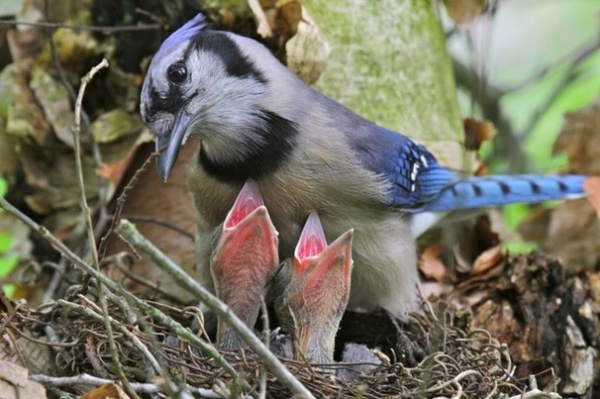
It was a fun experience that made the mornings a little more interesting. But one regret I have is that I didn’t know about NestWatch, a citizen science project founded in 1965 at the Cornell Laboratory of Ornithology. Since that time, the project has been collecting data in North America from community members based on nesting observations in home yards and neighborhood parks.
In other words, for 50 years citizens who find a nest like I did have recorded information on how many eggs or nestlings are present and other observations. They then send the data to NestWatch, which analyzes the trends.
In the early days of the program, a lot of the data was used to establish basic facts about nesting birds, which no one really knew much about up until that point. Things like what kind of trees birds nest in, how many eggs they lay and when they lay them, and when they build their nests. “People didn’t know these things,” says Robyn Bailey, NestWatch’s current project leader. “The database established the basic ecological information about even common birds.”
Lately, the lab has been looking at more complicated patterns and changes over time. A recent long-term trend that Bailey and NestWatch have noticed is that some birds are advancing their breeding time to more than a week [from] what it was 30 years ago, which could be due to climate change. “We never rule out some other unknown factor,” Bailey says. “But tree swallows feed on aerial insects, which typically relate to the climate when they hatch and fly around.”
Shown: Blue jay nestlings being fed; photo by David Magers
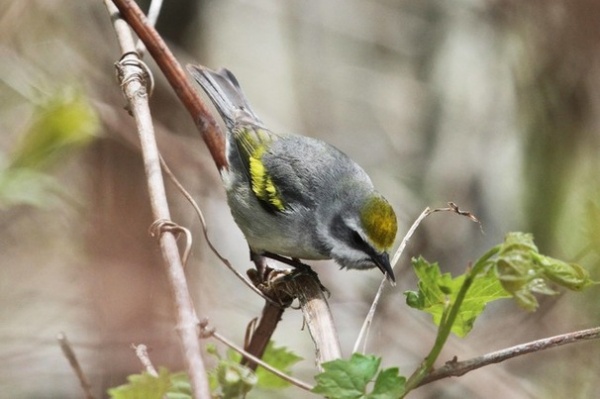
But it’s not just the people in the lab making the discoveries. Sometimes the citizens are the ones making headlines. Last year a participant in the program discovered the first twins of eastern bluebirds ever recorded. There were four eggs and five babies; two babies in one large egg. “It’s extremely rare,” Bailey says. “It’s the 14th case ever documented for wild birds.”
Bailey says they’ve also been seeing some shifts where birds are choosing to nest. Some are choosing to nest on or near our homes because there are fewer predators. She’s observed roadrunners, for example, nesting on homeowners’ patio tables or in their garages in the desert Southwest. “We’ve [previously] never seen them nest in anything other than a cactus or thorny shrub,” she says. “It’s an interesting shift.”
Basically, what all this means is that a lot of knowledge about the birds visiting backyards hinges on people like you and me to record data and send it to NestWatch.
Shown: Golden-winged warbler; photo by Charles and Sharnon Sorenson
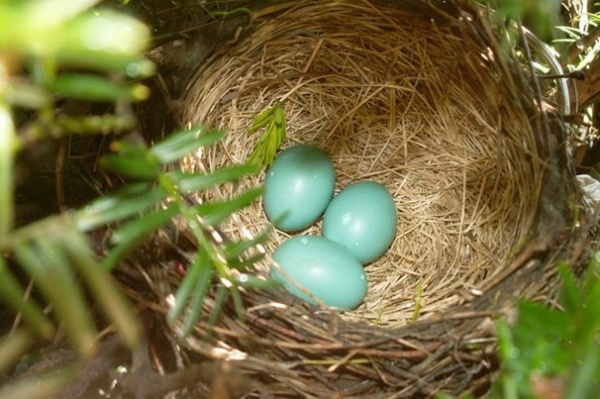
What to Do if You Discover a Nest in Your Yard
If you discover a nest on your property, it’s important to learn how to best observe nesting birds in your yard. The last thing anyone wants is to disturb a nest or cause an adult bird to abandon the nest, leaving the eggs or chicks to die. You should read up on NestWatch’s Code of Conduct and guidelines for taking photos of nests before getting involved, but I’ll summarize the actions briefly here.
Know when to check the nest. Bailey says if you check a nest every day, there’s a higher chance that you’ll disturb the nest and increase the likelihood that the adult bird abandons the nest. Instead, check every three to four days. “It’s the right balance of occasionally disturbing the nest but getting good data,” she says.
If you’re not collecting data on a nest, Bailey says there’s no reason to visit a nest at all. “I would argue that while you’re there, you might as well take some data and send it to us,” she says.
Afternoon is the best time to observe a nest, Bailey says. At dusk and throughout the night, birds sit on the eggs while sleeping until the young are big enough to stay warm on their own. You won’t see anything but a bird brooding (sitting on the eggs). In the afternoon or late morning, the bird will be out gathering food.
If you scare away a bird at night, there’s a chance the baby birds won’t be able to stay warm.
Shown: American robin eggs; photo by Linda Bowers
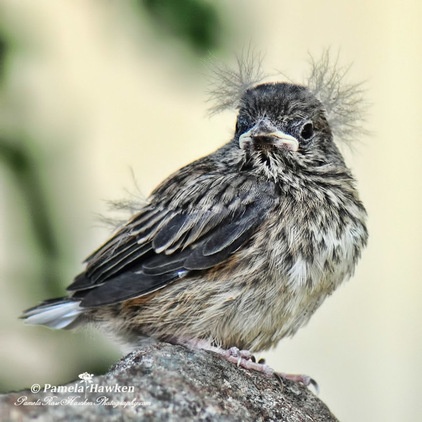
What kind of bird is this? So how do you figure out what kind of species of bird is nesting in your yard? NestWatch has a free smartphone app called Merlin in which you can set filters to narrow the list of possibilities to the common nesting birds in your region.
Set parameters for the color, size and time you saw the bird, and you should be able to identify it pretty quickly. You have to see the parent bird to make a good call, because there are similar nests and egg types, not to mention it’s difficult to identify the species of a bird that doesn’t have feathers yet. “Failing all else, take a picture and send it to us,” Bailey says.
Look but don’t touch. It’s illegal to touch or move an active bird nest. That holds true even if you’re about to start a home renovation project and a bird nest with eggs or chicks in it is hindering the work — say, it’s attached to your gutter or another area of your home exterior. It’s illegal to take it down or even move it a few feet. “You should try to wait as long as possible for the best outcome for the birds,” Bailey says.
There’s no good way to remove a bird nest, she says. Even trying to move one a few feet can cause them to fall apart, ruining the eggs and forcing the adult bird to abandon the nest. “We always want to think we can move a nest a couple of feet,” Bailey says. “But sometimes the nest itself is structurally dependent on your porch column. If taken off, it will fall apart.”
From the time a typical songbird starts laying eggs, they all will be around for about 30 days. If possible, schedule your project a month down the line. If you see chicks in the nest, you can shoot for about two weeks out.
Shown: Dark-eyed Junco fledgling; photo by Pamela Hawken
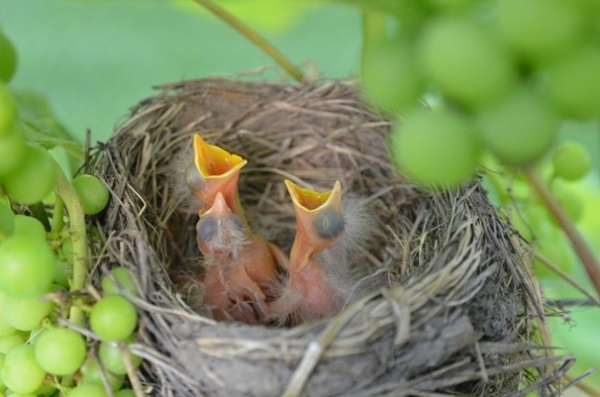
Know the truth about health concerns. Some people worry about health concerns with fecal matter surrounding nests, especially if the nest is covering an often-used entryway to your home. But Bailey is quick to assuage those fears. “There’s no more of a health concern than you would expect working in your garden or coming into contact with soil or other bacteria,” she says. “Make sure kids understand not to touch it. If you’re cleaning the droppings from a nest box and there’s potential for particles to become airborne, don’t breathe that in.”
Collect data. NestWatch has guidelines for what info to provide. Here’s an abridged version of what information you should try to collect:
Location. Use Google Maps or a GPS device to determine the exact location of your nest.Species. Download Merlin, NestWatch’s smartphone app, its guide to common nesting birds or another tool for determining bird species. Contents. Note the contents each time you observe the nest. Record the number of eggs, how many hatch and how many leave the nest. You want to record what happens in the nest from start to finish. If you find a nest and there are birds that have already hatched, just keep going back every three to four days until you can record if the birds flew successfully or failed. That last part includes noting when nests blow down in a strong storm or are ransacked by a predator. If you come upon the nest and there’s poop still in it, and it looks flattened and there’s nothing dead in it, then the birds probably succeeded. If you arrive to find the nest torn up or upside down and there are broken eggs, then they probably failed, most likely due to a predator.
Photo by Douglas Vogt
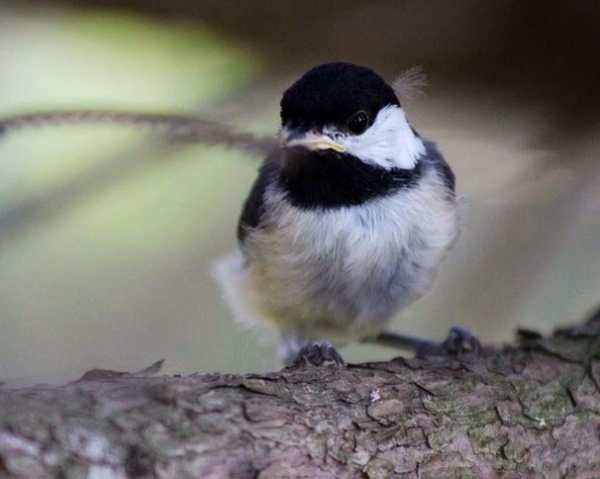
How to Attract Birds to Your Yard
You can increase the chances of birds’ nesting in your yard. Nest boxes, or birdhouses, have been responsible for the rebound of some species, such as the eastern bluebird.
NestWatch has a section on its website where you can determine the right birdhouse for the kind of bird you want to attract based on where you live and the habitat. You can download plans and build the birdhouse yourself or buy one. It’s important to have the correct dimensions. That colorful birdhouse you bought while vacationing in Florida might not be right for the birds in your Seattle backyard.
To attract birds you can also provide heterogeneous vegetation, meaning lots of different kinds of vegetation at varying heights — trees for canopy-nesting birds, shrubs for shrub nesters and grassy areas with wildflower beds for ground-nesting birds.
Also, native plants tend to be more likely to support nesting birds, because they provide the structure and materials commonly used for nests.
While Bailey acknowledges that not everyone wants to attract birds to a yard, and some people might even want to discourage it, she doesn’t recommend devices used to discourage nesting, such as bird netting. Instead, she recommends the art of redirection. If, say, a robin nests over your front door every year, try putting up a nest shelf somewhere more convenient. “The bird will probably like that better,” she says. “And you would like it better.”
How to Find the Right Native Plants for Your Yard
Shown: Black-capped chickadee fledgling; photo by Amy Whitmer
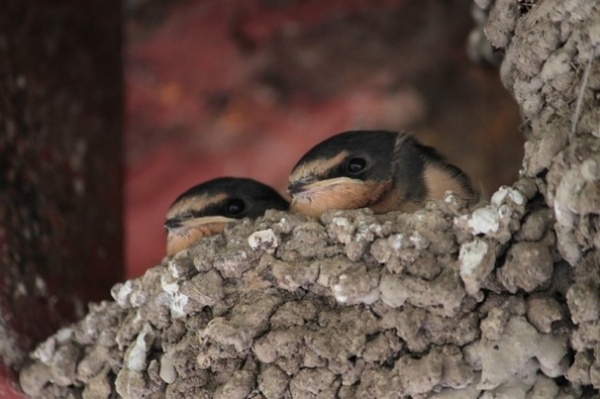
Watch Your Surroundings
If you’re a routine nest checker and an intelligent creature like a crow or cat figures out you’re going around checking nest boxes, it might associate you with a free meal ticket. So be careful if there’s a crow in your yard. Best to wait to check until nothing is watching.
Share your photos. Do you have an active nest on your property right now? We want to see it! Using the NestWatch guidelines for photographing birds presented in this article, take a picture of your bird nest and upload it to the Comments section. Then, of course, be sure to send your data to NestWatch.
Shown: Barn swallow nestlings; photo by Beth Galligan
More: Wild Birds Transform a Woman’s Garden and Life
Related Articles Recommended












